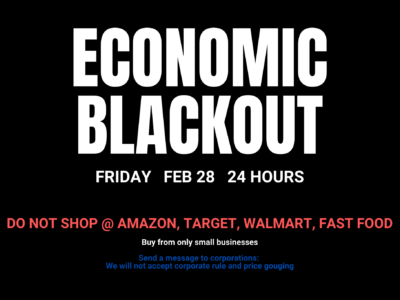“White feminism” is a problem. I know I don’t need to say this to women of color. I don’t need to say this to the LGBTQIA community or disabled women. These groups and others have been continually disregarded by the feminist movement due to its historic focus on the issues of able-bodied, cis-gendered, heterosexual, white women.
For those of you who don’t understand why this is a problem, ask yourselves: Am I just one thing? Or do my experiences inform the totality of my being, making them impossible to separate? I think we all know the answer to that question. And that’s why we need to do better.
What is “white feminism”? I know that moniker probably has some of you up in arms already. To be clear, white feminism doesn’t only refer to white women who identify as feminist, nor is every white woman who identifies as feminist a “white feminist.” “White feminism is not something that is just solely attributed to race, but it’s associated with race,” said Feminist Collective Co-Chair Justice Namaste. White feminism boils down to a relatively simple concept: feminism with assumptions.
“It’s a non-intersectional type of feminism that basically assumes that middle-class, cis-gendered, heterosexual white women’s experiences of womanhood and gender apply to all women and people of all genders and all people who are affected under any type of gender-based oppression,” said Namaste.
“White feminists” often disregard the ways in which gender-based oppression can be amplified by issues such as racism and classism. A good example of this is the wage gap. By now we’ve all heard the statistic. As of 2015, the AAWU reported that women “on average” make 82 cents to a man’s dollar. White women, that is. As of 2015, black women make 65 cents to the dollar and Hispanic women make 58 cents to the dollar. Don’t chalk it up to coincidence. Black women and Hispanic women, as well as other women of color, fall victim to the issues of sexism in a more insidious way because they are not just discriminated on the basis of their gender, but their race as well.
Experiences are not universal, particularly across marginalized groups. The way a white woman relates to feminism is generally not the same way that a black woman relates to feminism. The way a heterosexual woman relates to her feminism will not look the same as the way an LGBTQIA-identifying person relates to their feminism. “Liberation looks really different for different groups of people,” said Namaste. “And I think that white feminists typically lack any understanding of that or lack a pretty broad understanding of that and are oftentimes pretty defensive or dismissive when someone brings up something that contradicts their understanding of feminism.”
So if you make a comment about the Women’s March being successful because there were no arrests, and a woman of color checks you and explains how that is related to the fact that the majority of participants were white women, listen. Being a good feminist means being an intersectional feminist. And being an intersectional feminist means caring about issues that don’t always directly affect you and being an ally to the people fighting those battles.
It’s really easy to get defensive. It’s easy to believe that your best should be enough and that because you showed up and made an effort to care, you couldn’t possibly be part of the problem. But it’s not that simple. Even people with the best of intentions sometimes cause harm. “When someone checks you, instead of getting defensive, swallow that instinct and think about what they’re saying,” said Namaste. “Being open to critiques and responding to critiques in a way that is inclusive and understanding is really important.”
In your attempts to be an ally you will probably mess up at some point. Own that. When you make a mistake and someone calls you on it, take that opportunity to learn from someone else’s experience. Being an ally to someone else isn’t easy. It requires work.
People are ingrained with the privileges they are afforded by society. Combating those things takes time and effort. As an ally, you’ll need to confront a lot of your own assumptions. That is ok. That is normal. That is necessary. “A lot of people, when they’re grappling with their privilege and trying to understand what to do with it just have a lot of guilt and feel like everything that they do is wrong and harmful. Or like they don’t want to do anything because, ‘Oh, anything I do will just mess it up,’” said Namaste. “[But] choosing inaction is also making a choice.”
You need to show up—especially now when so many people are at risk for losing their rights. It is vital that we all show up, regardless of our privilege, experience or station in life. We need to know when to step up and when to step back. “Recognizing when your voice should be present and when your voice should not be present is one of the best things you can do to recognize your privilege,” said Namaste. If you attend a rally for an issue that doesn’t directly affect you, your voice probably doesn’t need to be heard. But your presence still makes a difference.
There is strength in numbers. Educating yourself by showing up and listening is a great way to learn how to become an ally. “Allyship is kind of complicated, but always making sure that your entire point of being there is to help support other people is a way that you can consistently be a good ally,” said Namaste. Show up. Listen. Then go home and tell your friends what you witnessed. Talk to the people in your life who also haven’t experienced those struggles. Make a point of attempting to educate those around you.
If you want to make a difference and you want to help, it will be difficult. When it comes to feminist issues, yes, white women do deserve a seat at the table. We need to show up for the issues that affect us, but we also need to show up for the ones that don’t. Staying home isn’t an option.
In times like these, we need to stick together. We need to understand that the privileges we have been afforded can be used for good. And if they go to waste, then shame on us all.



















